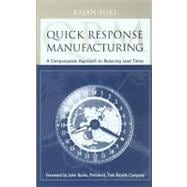
Note: Supplemental materials are not guaranteed with Rental or Used book purchases.
Purchase Benefits
What is included with this book?
| Publisher's Message | xiii | (4) | |||
| Foreword | xvii | (4) | |||
| Preface | xxi | (4) | |||
| Acknowledgments | xxv | ||||
| Part One: A New Way of Thinking Stems from One Principle | 1 | (84) | |||
|
3 | (24) | |||
|
6 | (2) | |||
|
8 | (3) | |||
|
11 | (6) | |||
|
17 | (5) | |||
|
22 | (2) | |||
|
24 | (3) | |||
|
27 | (26) | |||
|
29 | (1) | |||
|
30 | (4) | |||
|
34 | (4) | |||
|
38 | (3) | |||
|
41 | (3) | |||
|
44 | (9) | |||
|
53 | (32) | |||
|
54 | (3) | |||
|
57 | (10) | |||
|
67 | (2) | |||
|
69 | (9) | |||
|
78 | (7) | |||
| Part Two: Rethinking Production and Materials Management | 85 | (216) | |||
|
87 | (20) | |||
|
88 | (1) | |||
|
89 | (7) | |||
|
96 | (4) | |||
|
100 | (2) | |||
|
102 | (5) | |||
|
107 | (26) | |||
|
108 | (8) | |||
|
116 | (13) | |||
|
129 | (4) | |||
|
133 | (20) | |||
|
134 | (3) | |||
|
137 | (3) | |||
|
140 | (2) | |||
|
142 | (1) | |||
|
142 | (2) | |||
|
144 | (4) | |||
|
148 | (1) | |||
|
149 | (4) | |||
|
153 | (36) | |||
|
154 | (2) | |||
|
156 | (3) | |||
|
159 | (3) | |||
|
162 | (3) | |||
|
165 | (6) | |||
|
171 | (2) | |||
|
173 | (3) | |||
|
176 | (1) | |||
|
177 | (6) | |||
|
183 | (3) | |||
|
186 | (3) | |||
|
189 | (34) | |||
|
190 | (7) | |||
|
197 | (4) | |||
|
201 | (9) | |||
|
210 | (10) | |||
|
220 | (3) | |||
|
223 | (44) | |||
|
223 | (4) | |||
|
227 | (6) | |||
|
233 | (1) | |||
|
234 | (5) | |||
|
239 | (4) | |||
|
243 | (20) | |||
|
263 | (4) | |||
|
267 | (34) | |||
|
268 | (4) | |||
|
272 | (13) | |||
|
285 | (2) | |||
|
287 | (4) | |||
|
291 | (10) | |||
| Part Three: Rethinking Office Operations | 301 | (82) | |||
|
303 | (32) | |||
|
304 | (5) | |||
|
309 | (5) | |||
|
314 | (21) | |||
|
335 | (28) | |||
|
335 | (3) | |||
|
338 | (11) | |||
|
349 | (14) | |||
|
363 | (20) | |||
|
364 | (2) | |||
|
366 | (1) | |||
|
367 | (2) | |||
|
369 | (2) | |||
|
371 | (1) | |||
|
372 | (1) | |||
|
373 | (1) | |||
|
374 | (9) | |||
| Part Four: QRM for Rapid New Product Introduction | 383 | (42) | |||
|
385 | (40) | |||
|
387 | (1) | |||
|
388 | (4) | |||
|
392 | (5) | |||
|
397 | (5) | |||
|
402 | (17) | |||
|
419 | (3) | |||
|
422 | (3) | |||
| Part Five: Creating the QRM Enterprise | 425 | (85) | |||
|
427 | (18) | |||
|
428 | (5) | |||
|
433 | (2) | |||
|
435 | (1) | |||
|
436 | (3) | |||
|
439 | (3) | |||
|
442 | (3) | |||
|
445 | (52) | |||
|
446 | (4) | |||
|
450 | (8) | |||
|
458 | (11) | |||
|
469 | (3) | |||
|
472 | (15) | |||
|
487 | (6) | |||
|
493 | (4) | |||
|
497 | (13) | |||
|
498 | (9) | |||
|
507 | (3) | |||
| Appendix | 510 | (2) | |||
| Endnotes | 512 | (22) | |||
| About the Author | 534 | (2) | |||
| Index | 536 |
The New copy of this book will include any supplemental materials advertised. Please check the title of the book to determine if it should include any access cards, study guides, lab manuals, CDs, etc.
The Used, Rental and eBook copies of this book are not guaranteed to include any supplemental materials. Typically, only the book itself is included. This is true even if the title states it includes any access cards, study guides, lab manuals, CDs, etc.